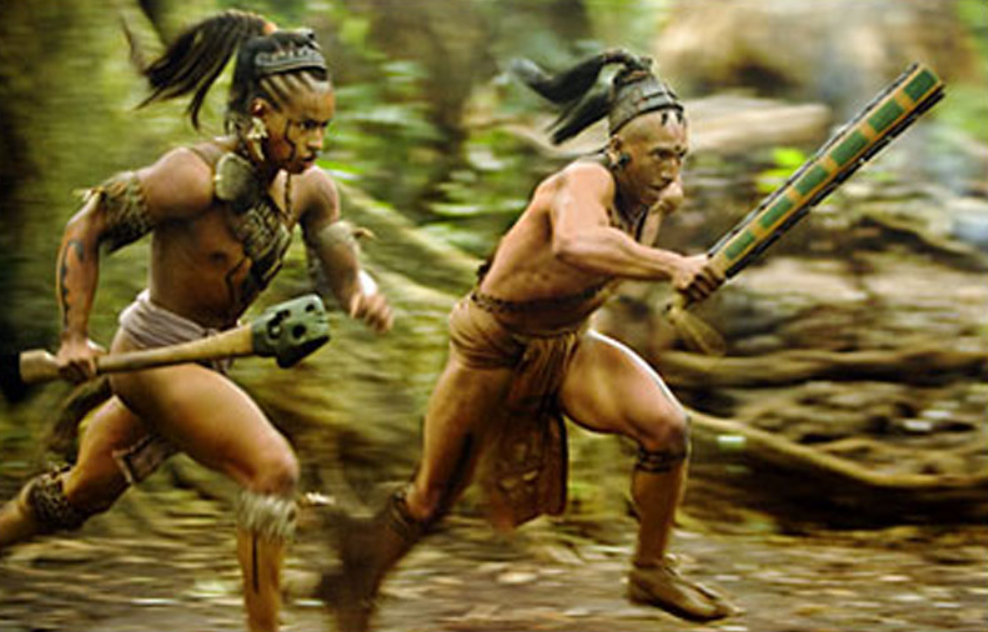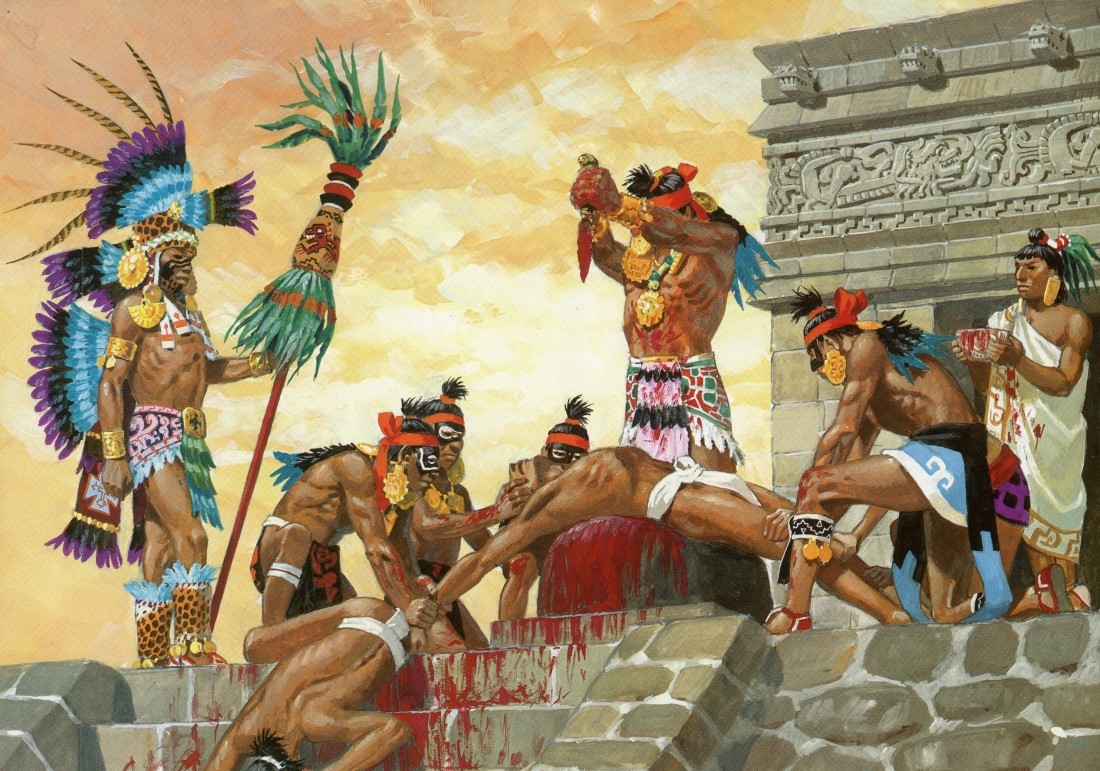The macuahuitl is arguably the most famous Aztec weapon. The ancient society also had darts, slings, clubs, spears, arrows, spear throwers, and defensive weapons like shields, helmets, and armors.
The Aztecs secured their place in history with their unique culture, amazing knowledge, and the creation of one of the most advanced aqueduct systems in existence. Despite their incredible advances in medicine and other areas, they were also absolutely terrifying in battle, thanks to the Aztec macuahuitl.
There isn't much to say about the Aztec macuahuitl, except for the fact that it is utterly terrifying. The crude instrument consisted of a thick wooden club about three to four feet in length.
Despite being attributed to the Aztecs, the macuahuitl was also used in Mexico and Central America as the tribes fought against each other. According to some historical accounts, the macuahuitl was also used by the Mayans, the Mixtec, and the Toltec.
The word macuahuitl was used by Native Americans living in central Mexico in reference to a wooden staff fitted with obsidian blades. The word is derived from the words maitl, which means hand, and cuahuitl, which means wood or stick.
The Legendary Aztec Macuahuitl

The Aztec macuahuitl was one of the things that made Aztec warriors so scary. The weapon was used before and after the Spanish conquest, and it was the weapon of choice for the Aztec army.
It is believed that the weapon was invented to efficiently train an army of commoners.
The brute weapon could have been used even against armored Spanish soldiers. They were shocked to realize that the sword could cut through their spears with its obsidian edge and cause severe damage to their armor.
Obsidian is the only substance in the world that can be sharpened to the width of a single atom, which is why it has the reputation of being the sharpest substance in the world as it can exceed the sharpness of high steel razor blades.
Otherwise, the obsidian edges gave the Aztec macuahuitl a distinctive chainsaw appearance that sent chills down the spines of potential victims.
That is partly the reason invading Spanish warriors hesitated when they realized they were going against the Aztec warriors with their obsidian chainsaws.
Due to this advanced weapon and other factors, the invading Spanish army quickly discovered that the Aztec Empire was far more powerful than anything they had ever had to deal with before. The Aztecs were ahead of the Spanish in many aspects, including medicine.
The Aztec culture was also centered on war, making their armies quite fearsome. The warriors were dressed as jaguars or eagles to appear scarier to their enemies.
Before becoming part of the Aztec army, a warrior had to capture an enemy soldier first.
Even The Spanish Were Impressed By The Macuahuitl

The Spanish were most impressed by the Aztec macuahuitl, which they called the broadsword. The weapon was decorated with carved patterns, feathers, jewels, and even paint.
During his travels, Christopher Columbus saw it and was so fascinated that he carried one back to Spain as a souvenir.
The macuahuitl was also quite heavy, as it also had to be used as a crushing weapon. The weight, however, did not make it heavy and unwieldy as would be the case with a club.
Nonetheless, elite Aztec soldiers were quite skilled in using the macuahuitl. The Aztec soldiers wielding the macuahuitls would only advance after the archers and slingers were close enough.
The wooden part was essentially a paddle, an invention the Aztecs had borrowed from America during the Late Classic Era.
They had both a one-handed and a two-handed version of the Aztec Macuahuitl. The one-handed version measured three and a half feet long, and the two-handed alternative could be as tall as a man.
The earliest version of the weapon was one-handed. The larger, two-handed version came later.
Just How Dangerous Was The Macuahuitl?

In close-quarter combat, the Aztec macuahuitl was a fearsome and powerful weapon. Hernan Cortes gave a very clear description of the weapon in 1519:
"They have swords of this kind — of wood made like a two-handed sword, but with the hilt not so long; about three fingers in breadth. The edges are grooved, and in the grooves they insert stone knives, that cut like a Toledo blade. I saw one day an Indian fighting with a mounted man, and the Indian gave the horse of his antagonist such a blow in the breast that he opened it to the entrails, and it fell dead on the spot."
In particular, the Aztecs liked to use the weapon to maim their prisoners of war and then sacrifice them to their gods while they were still alive.
The blades were sometimes serrated to ensure the weapon did maximum damage to the unlucky victims they were used on. The roughened edges would rip and tear the body as the macuahuitl was being pulled back.
When used right, the weapon could be used to cut a man into two with a single swing.
Anyone attacked using the Aztec macuahuitl had to suffer incredible levels of pain that would make them wish for a quick death. Those who would be incredibly lucky to live after an encounter with the weapon would never forget the horror of being attacked with the Aztec macuahuitl.
Accounts given by Spanish soldiers claimed that the weapon was strong enough to decapitate humans and even horses. After the weapon was used on a horse, the head would hang only by a flap of skin.
The Aztec Macuahuitl Had Many Uses

In 2009, a Mexican archaeologist, Alfonso A. Garduno, did experiments to confirm if the legends about the Aztec macuahuitl were true. In the end, he discovered that the crude weapon has two main purposes.
Based on its design, it had blunt sections that could be used to knock people unconscious. In cases where the intention was to sacrifice the victim to the gods, the unconscious victim would be dragged away while still alive.
The Aztecs regularly offered human sacrifices, and the macuahuitl was uniquely suited to the role. The weapon could maim the victim, cause many minor cuts or rips, or be used to club the person to make them unconscious.
The weapon also spotted flat edges with four to eight very sharp volcanic edges. The edges were several inches long, and they looked like chainsaw teeth.
Some versions of the macuahuitl had a continuous obsidian edge that went from one side to the other. The edge could be chiseled to make it sharper than glass.
The razor-sharp edge was significant when cutting things open. That is why those who wielded the weapon used this edge to slash the neck, legs, or chest.
Blood loss would often make many victims die, and those who didn't were left with horrific wounds.
The Aztec Macuahutl Today

It's quite tragic that no Aztec macuahuitls are in existence today. The only version that survived the Spanish conquests burned down in 1849 in the Spanish royal armory.
That has not stopped people from trying to recreate the weapon based on drawings in books from the sixteenth century.
Still, considering how devastating this weapon was when it was in use many years ago, it is probably a good thing it did not survive for as long as we would have hoped. The original Aztec macuahuitl exists only in history books.
Still, the Aztec macuahuitl is a mystery today. There are many unanswered questions about its usage, origin, distribution, and cultural development.



